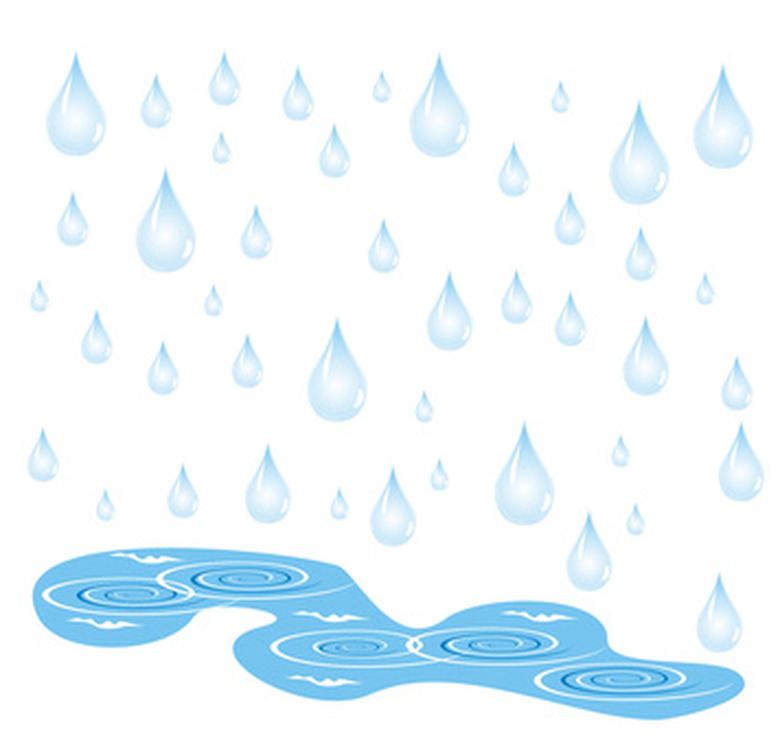How To Calculate Average Area Using The Rainfall Thiessen Method
In the field of hydrology, measurement of daily rainfall is very important. Many methods are employed. One is the Thiessen polygon method, a graphical technique named for Alfred H. Thiessen, the American meteorologist (1872–1956) who developed it. Thiessen polygons are used to calculate areas in relationship to specifically placed rain gauges and thereby compute the average amount of precipitation that fell in a specific basin during a storm or weather incident.
Step 1
Plot the location of rain gauges on the base map with a pencil.
Step 2
Connect adjacent points with dashed lines using a straight edge and pencil.
Step 3
Construct perpendicular bisectors across the dashed boundary lines.
Step 4
Connect the bisector lines to outline polygons belonging to each station or region.
Step 5
Count squares on the graph paper to determine the size of each area. Areas of polygons are calculated and expressed as fractions of the total area.
Step 6
Create a chart using the data. For example, list four columns labeled Station Precipitation, Area in Basin, Percent of Total Area and Adjusted Precipitation. Under each column, record given data. Under Adjusted Precipitation, multiply the data in column one by the data in column three for each data point.
Step 7
Calculate the sum of column four, the Adjusted Precipitation. This sum represents the total precipitation over the entire area.
Things Needed
- Graph paper
- Base map of given drainage basin or region
TL;DR (Too Long; Didn't Read)
When using graph paper to determine the area of each polygon, define the scale based on the total given area.
Warning
Calculate the percentage of the total area that each polygon represents; constructing a table is a useful way to remember this.
References
- "Journal of Hydrologic Engineering"; Simple, Practical Method for Determining Station Weights Using Thiessen Polygons and Isohyetal Maps; Fritz R. Fieldler; July/August 2003
- "Hydrology Handbook"; American Society of Civil Engineers; 1996
Cite This Article
MLA
Bernard, Yvonne. "How To Calculate Average Area Using The Rainfall Thiessen Method" sciencing.com, https://www.sciencing.com/calculate-using-rainfall-thiessen-method-6799886/. 24 April 2017.
APA
Bernard, Yvonne. (2017, April 24). How To Calculate Average Area Using The Rainfall Thiessen Method. sciencing.com. Retrieved from https://www.sciencing.com/calculate-using-rainfall-thiessen-method-6799886/
Chicago
Bernard, Yvonne. How To Calculate Average Area Using The Rainfall Thiessen Method last modified March 24, 2022. https://www.sciencing.com/calculate-using-rainfall-thiessen-method-6799886/
